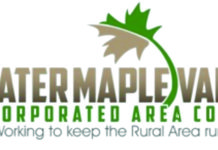
One of the storied families of greater Maple Valley are the Peacocks of Hobart. In this photo from the late 1890s, the Peacock family pose in front of the home they built in 1889.
Charles and Ellen were born in England in 1851, married at age 20, and immigrated to the U.S. by way of Canada. The family grew to include five boys and two girls.
Charles worked at the coal mine of Franklin in the mid-1880s, saving enough money to buy 200 acres of land in Hobart for $4 per acre. He purchased the land in Section 1 from the Northern Pacific Railroad, part of the land grant of odd-numbered sections, which induced construction of a railroad to the Puget Sound.
Through toil and tears the Peacocks converted their acreage to farmland, no small task where old growth stumps were often more than 10 feet across. According to Hubert Peacock, “It took my grandfather and his three oldest boys two weeks of hard labor to create a spot large enough to start building the house.”
A barn was added in 1899, sometime after this photo was taken. In 1892 the Columbia & Puget Sound purchased a 60-foot right-of-way from the family for $400, in order to build the rail line to Taylor. In time a rail platform was developed and the Peacock farm became one of several stop along the railroad to Maple Valley.
Charles’ son, Bill Peacock, ran a dance hall in the barn on his portion of the original property during the late 30s and early 40s, attracting dancers from as far away as Seattle. A grandson, Hubert, operated a dairy farm on the property from 1936-1963, then switched to raising beef cattle.
In 1952, Hubert and his wife Marian built their own dance hall nick-named Peacock’s Roost where square dances were held every Saturday night. Over time most of the 200 acres was sold, yet today Dick Peacock, great-grandson of Charles and Ellen maintains 30 acres of the old homestead. Fittingly for this founding family, Dick Peacock is President of the Maple Valley Historical Society.
This photo number 2014.4.22.1 come courtesy of MVHS and the Washington State Historical Society. Next week, more about the Peacock whistle stop on the rail line.








